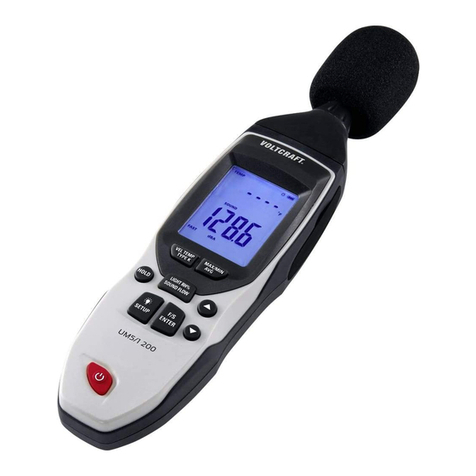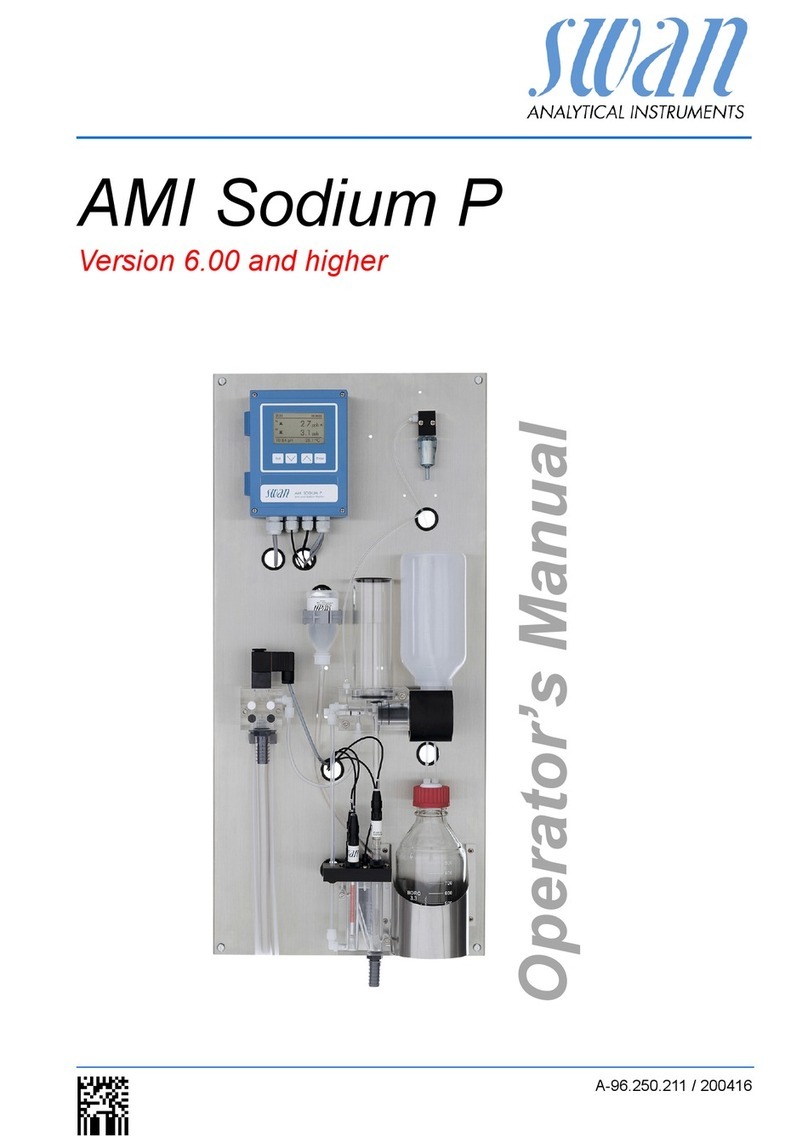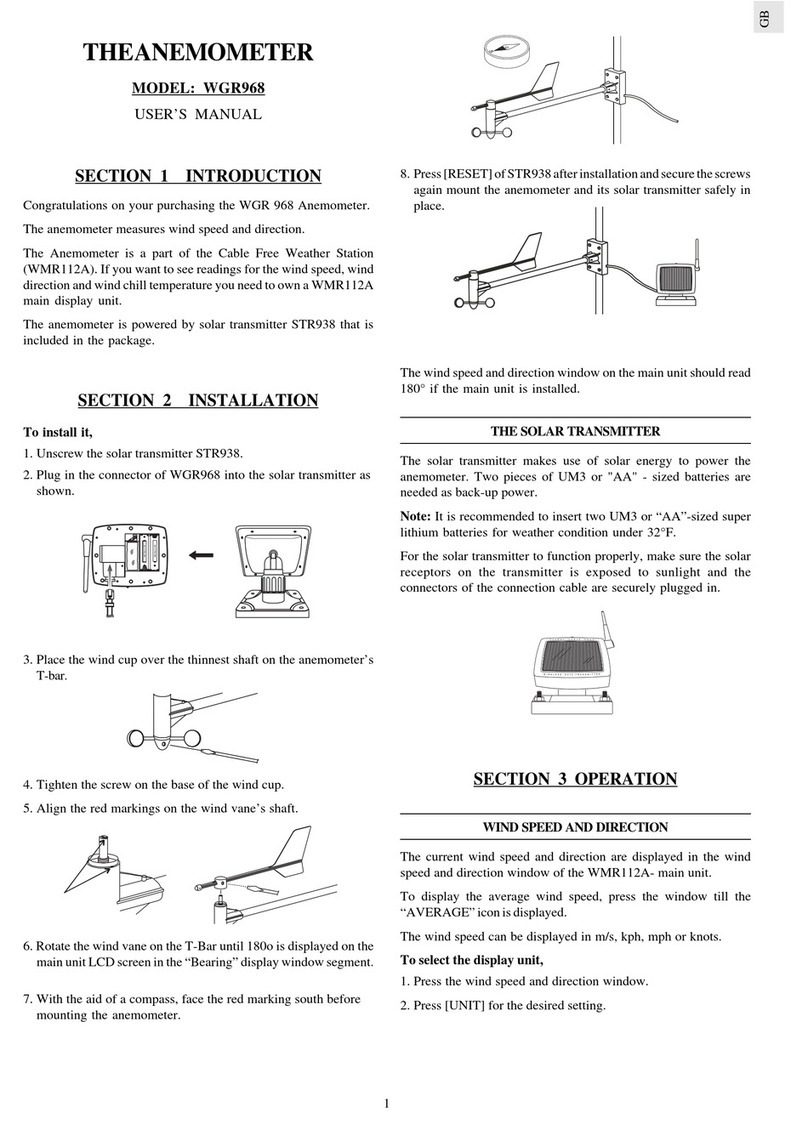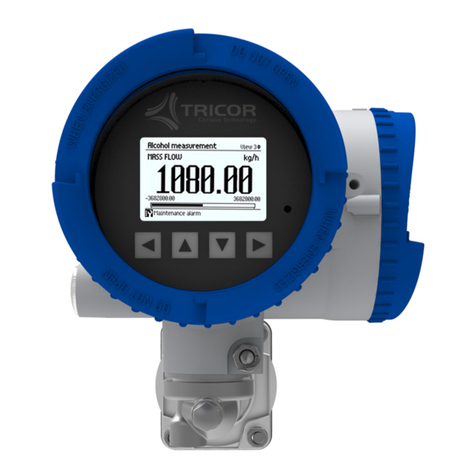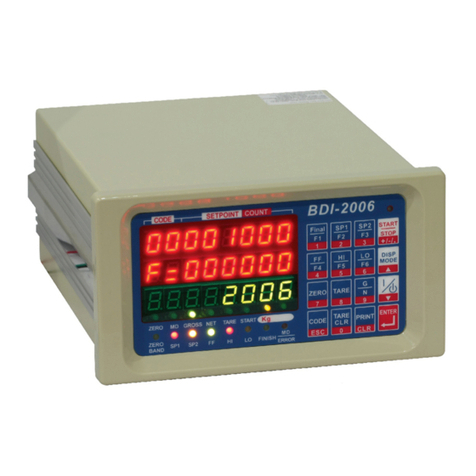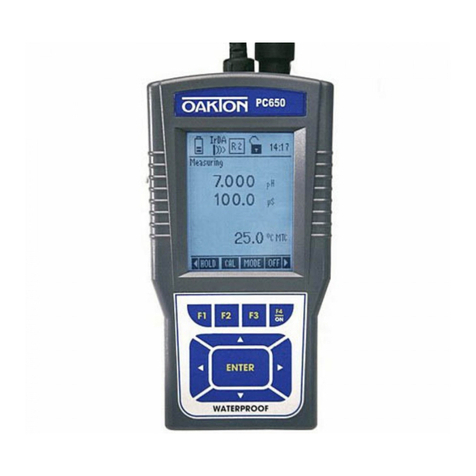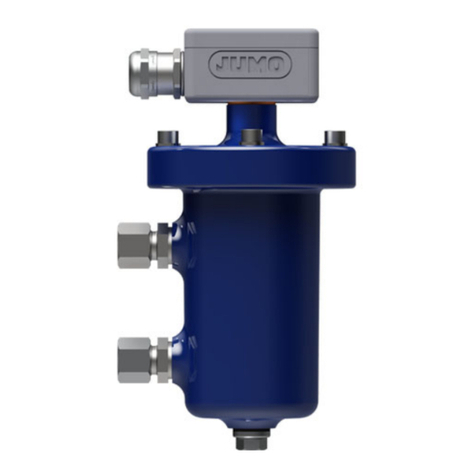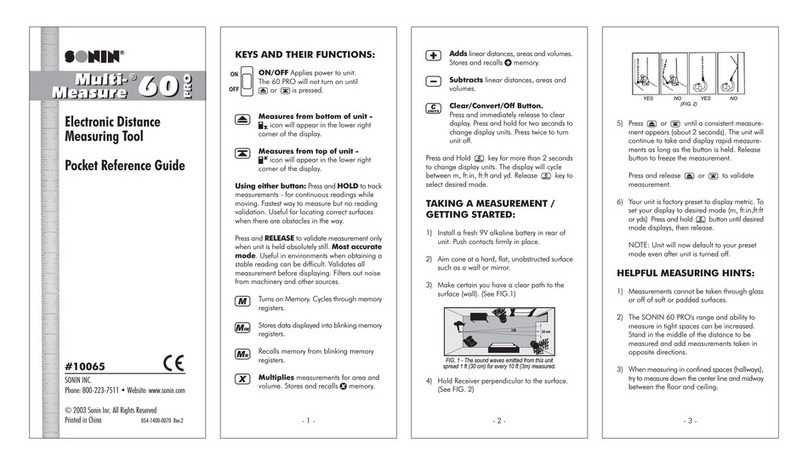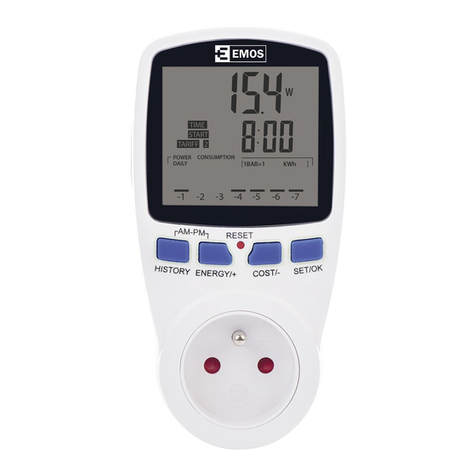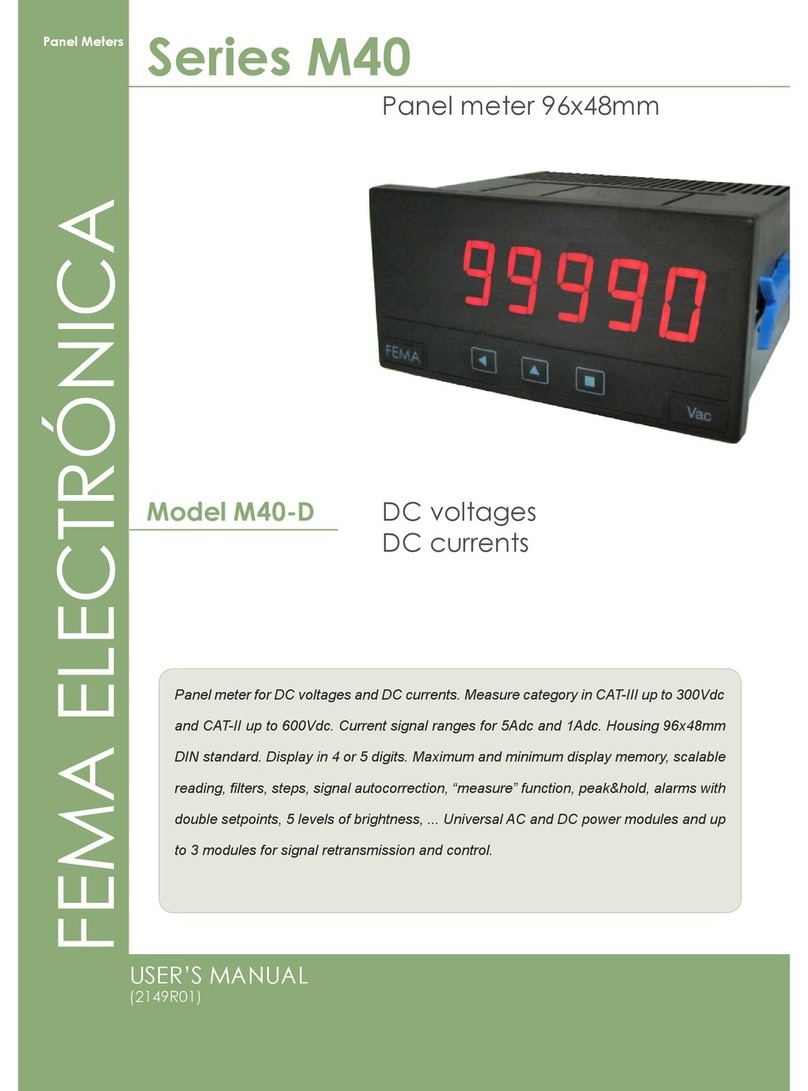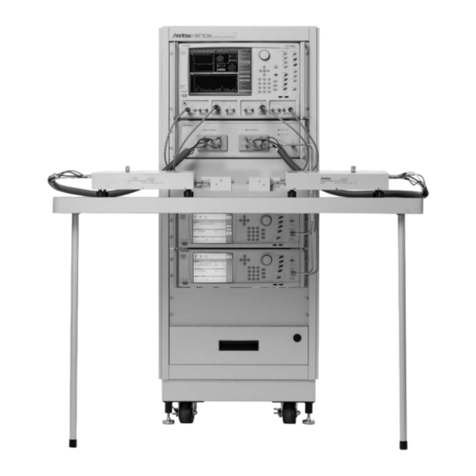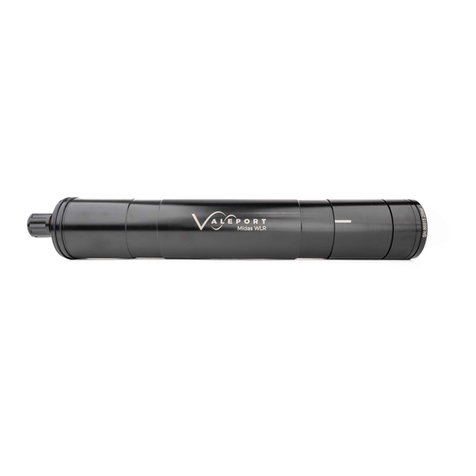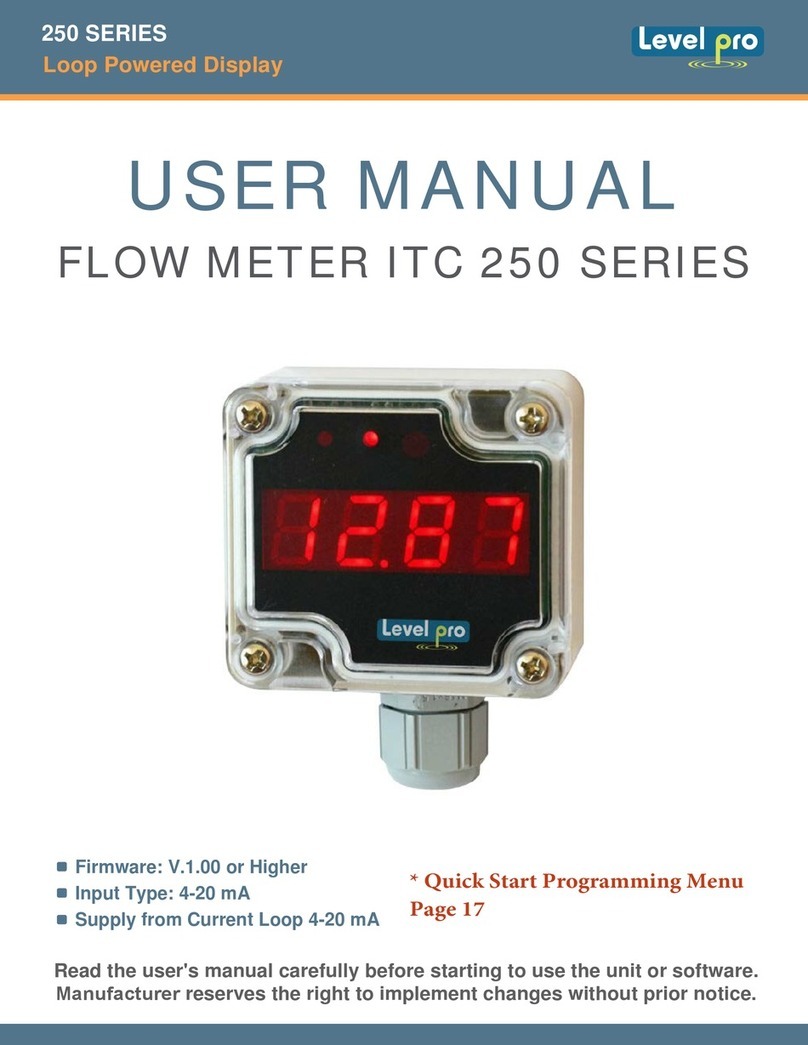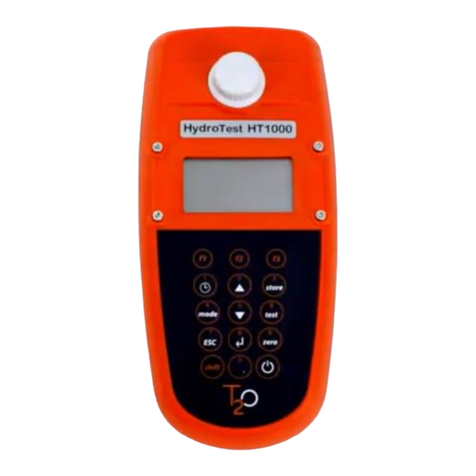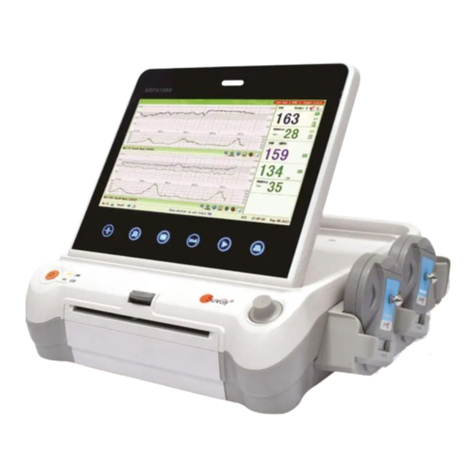TASKING iSYSTEM Infineon DAP/DAPE II User manual

Infineon DAP/DAPE II Active Probe
User Manual
V1.0
March 2023

This document and all documents accompanying it are copyrighted by iSYSTEM AG and all rights are
reserved. Duplication of these documents is allowed for personal use. In all other cases, written consent
from iSYSTEM is required.
iSYSTEM AG. All rights reserved.
All trademarks are property of their respective owners.
www.isystem.com

Contents
Infineon DAP/DAPE II
Important safety notice ......................................................................................................................... 5
Package content ...................................................................................................................................... 6
Specifications ........................................................................................................................................... 7
Operation ................................................................................................................................................... 8
Recommended Target Debug Connectors and Position ......................................................................................................................10
mDIOcable ..........................................................................................................................................................................................................................11
ECU14DAP 10-pin 1.27mm Converter .............................................................................................................................................................12
MEDC17 DAP 10-pin 1.27mm Converter .........................................................................................................................................................13
10-pin DAP2 to 22-pin ERF8 DAP2 Converter ............................................................................................................................................14
DAP 10-pin 1.27mmto HSTCU (USB-C) Converter ................................................................................................................................... 15
Active Probe and the iC5700 Connecting Guidelines .................................................................... 17
Setting Debug Interface Voltage Levels .........................................................................................................................................................19
DAP and DAPE configuration ..................................................................................................................................................................................20
Further Active Probe Settings ............................................................................................................ 21
Accessories ............................................................................................................................................. 23

Infineon DAP/DAPE II
Infineon DAP/DAPE II Active Probe - Enables debugging, tracing and testing of Infineon’s
AURIX™ microcontroller family. It supports DAP and DAPE debug interface operating at their
maximum frequency. Its small and compact hardware size allows for connecting to a target
microcontroller in a confined space as far as 10 m away.
iC5700 BlueBox On-Chip Analyzer - Hardware platform designed for debugging and testing a
wide range of embedded microcontroller platforms that are based on a variety of processor
architectures. Functionality can be further extended with the addition of our IOM6 Accessories,
enabling the synchronous capture of analog and digital signals in parallel to trace
information. Such capability is used for advanced debugging of complex applications together
with our winIDEA Integration Development Environment (IDE), as well as for thorough testing
in conjunction with our testing environment testIDEA.
winIDEA - Integration Development Environment (IDE) delivers the visual insights required to
debug your embedded application. At the simplest level, winIDEA provides all the usual
functionality of an IDE (breakpoints, stepping and device programming). Supported by a target
microcontroller, winIDEA can also visualize the timing and code coverage of the application
via the trace interface, as well as combine data captured by the IOM6 Accessories. Various
third-parties also provide software tools to perform advanced worst-time-execution analysis
based upon the data winIDEA can export. When a Real-Time Operating System (RTOS) is in
use, the state of the RTOS and its tasks can also be visualized. More information
isystem.com/winideaide.
testIDEA - testIDEA environment simplifies the development of unit tests for embedded
applications. By making use of the winIDEA environment, this application makes it easy to
locate source code functions and generate test cases for them. Tests are then executed using
the Original Binary Code (OBC) method, testing the object code running on the target
microcontroller. The tests, which are stored as YAML files, can easily be added to a project,
maintained in a repository, and then automatically executed together with Continuous
Integration (CI) tools such as Jenkins. More information isystem.com/testidea.
isystem.connect - There are times when it is more efficient to write a script to execute a task
that requires many clicks within a visual development environment. This is where our Software
Development Kit (SDK) isystem.connect comes in. The well-documented interface provides
access to Python, Java, and other languages so that any action available within winIDEA and
testIDEA can be scripted. Scripts can also be executed directly from within winIDEA, thereby
allowing the developer to extend its functionality. More information isystem.com/sdk.
iSYSTEM's solutions run under Microsoft® Windows®, GNU, Linux OS; or optionally within the
Eclipse environment via a plugin. Software can be downloaded from the Downloads page at
http://www.isystem.com.

Important safety notice
General safety instructions - Please read the following safety precautions carefully before putting
this device to use to avoid any personal injuries, damage to the instrument, or to the target system.
Use this instrument only for its intended purpose as specified by this manual to prevent potential
hazards.
Use included power cord and power supply - The enclosed power supply has been approved for
use by iSYSTEM. Please contact iSYSTEM if you need to consider an alternative power.
Use grounding wire - Prior to applying power to either the BlueBox or the target, connect the device
and the target system together with the included grounding wire. This is to avoid potential damage
caused by any voltage difference between the device and the target system.
Use proper overvoltage protection - Please ensure proper protection to avoid exposing the
BlueBox device or the operator to overvoltage surges (e.g. caused by thunderstorm, mains power).
Do not operate without cover - Do not operate the device with cover removed.
Avoid circuit and wire exposure - Do not touch exposed components or wires when the device is
powered.
Do not operate with suspected damage - If you suspect damage may have occurred, the BlueBox
device must be inspected by qualified service personnel before further operation.
Do not operate the device outside its rated supply voltage or environmental range - Consult
with iSYSTEM before using equipment outside of the parameters provided in this manual.
This symbol is used within the manual to highlight further safety notices.

Package content
The Infineon DAP/DAPE II Active Probe kit is delivered with the following components:
Infineon DAP/DAPE II
Active Probe
Two 10-pin 1.27mm 10cm
long ribbon cables
1m FNet
Cable
Ordering code:
IC57163-1
Ordering code:
IA10PIN10PIN127-AP
Ordering code:
BB-FNET-100
User Manual

Specifications
GENERAL
Supply voltage
9.0V DC via FNet cable
Operating temperature
10°C to 40°C
Storage temperature
-10°C to 60°C
Humidity
5% to 80% RH
MECHANICAL
Size
95 x 55 x 20 mm
Weight
0.155 kg
OPERATION
Communication
interface to BlueBox
iSYSTEM proprietary FNet
Debug signal valid
input voltage range
5.0 V (max. 5.5 V)
Power consumption
Max. 2.5 W (dependent on operation mode)
TARGET SIGNALS
Debug signals
33 Ohm series termination/protection resistors
DAP1-3 and DAPE1-3
10k Ohm pull-down
DAP_RESET
1k Ohm pull-up
5 mA via VREF needed for hot-attach functionality.

Operation
Device overview
A– 10-pin DAP connector, with the following pinout:
Signal
Direction
Signal Description
Signal
Pin
Pin
Signal
Signal Description
Signal
Direction
I
Reference Voltage
Vref
1
2
DAP1
DAP Data
I/O
Ground
GND
3
4
DAP0
DAP Clock
O
Ground
GND
5
6
DAP2
Optional 2nd Data Pin
I/O
Not Connected
NC
7
8
nTRST/DAP
EN
Optional 3rd Data Pin
I/O
Ground
GND
9
10
nRESET
Reset
O
10-pin DAP pinout
B – 10-pin DAPE connector, with the following pinout:
Signal
Direction
Signal Description
Signal
Pin
Pin
Signal
Signal Description
Signal
Direction
I
Reference Voltage
Vref
1
2
DAPE1
DAP Data
I/O
Ground
GND
3
4
DAPE0
DAP Clock
O
Ground
GND
5
6
DAPE2
Optional 2nd Data Pin
I/O
Not Connected
NC
7
8
DAPEN/DAP
3
Optional 3rd Data Pin
I/O
Ground
GND
9
10
NC
Not Connected
10-pin DAPE pinout
C – The indicator light provides the status of the Active Probe as follows:

Permanently green – Powered on and ready to use.
Blinking green – Establishing connection with the BlueBox.
Blinking blue – Reprogramming SPLASH.
Permanently magenta – Golden image loaded and ready to use.
D – mDIO port with the marked Pin1 on the housing
mDIO port provides two digital signals, which can interact with the embedded target. Each can
be configured either for input or output operation.
Number
Name
Pin1
IOØ
Pin2
IO1
Pin3
GND
mDIO port pinout
E – FNet connector, that connects the Active Probe to the iC5700 BlueBox. The FNet cable is
delivered with the Active Probe.
When powering on the system, switch the iC5700 on before powering on the target.
When powering down the system, power off the target before powering off the iC5700!
Use only original iSYSTEM accessories for powering and connecting with the iC5700.
Consult with iSYSTEM before attempting to use any other accessory.

Recommended Target Debug Connectors and Position
The target debug connector is a 10-pin, 1.27mm, double-row connector (e.g. Samtec FTSH-
105-01-L-DV,Samtec FTSH-105-01-L-DV-K with Keying Shroud).
1. Use the target debug connector(s) with the Keying Shroud option since incorrect connection
can cause damage to the hardware.
2. Pin 1 of the connector(s) should be located toward the PCB’s edge to prevent the need to
twist or fold the debug ribbon cable(s) (see the picture below).
3. When using DAP and the DAPE debug interfaces, the DAPE connector should be placed to
the left of the DAP connector when looking from the edge of the PCB. The connectors must be
at least 11.0 mm apart, although a distance of 16.8 mm is recommended. The goal should be
to link the Active Probe to the target hardware via non-twisted and, when DAPE is used, parallel
ribbon cables.

mDIO cable
Ordering code
BB-AP-MDIO-20
mDIO Cable is used to connect the Active Probe mDIO port with the signals around the
debugged microcontroller, which can then be either read or controlled by the debugger. For
example, the debugger can periodically service an external watchdog through the mDIO output
or just read and record an external signal through the mDIO input. It must be ordered
separately. Length of the cable is 20 cm.
The following pinout is valid on the Active Probe side:
Number
Name
Color
Pin1
IOØ
White
Pin2
IO1
Brown
Pin3
GND
Black
mDIO Cable pinout

ECU14 DAP 10-pin 1.27mm Converter
Ordering code
IADAP10ECU14
The ECU14 connector and the pinout has been defined by Bosch.
The ECU14 DAP 10-pin converter is connecting at the end of the 10-pin 1.27mm Infineon DAP2
Wide D. Adapter (Ordering code IC50163-2) or Infineon DAP/DAPE II Active Probe (Ordering
code IC57163-1) acting as a pinout converter is available for TriCore embedded targets
featuring the ECU14 10-pin 1.27mm target debug connector. It must be ordered separately.
A1 - The following pinout is valid on the target side:
Signal
Direction
Signal Description
Signal
Pin
Pin
Signal
Signal Description
Signal
Direction
Ground
GND
1
2
DAP0
DAP clock
O
Not Connected
NC
3
4
DAP2
Optional 2nd Data pin
I/O
I/O
DAP Data pin
DAP1
5
6
DAPEN
Optional 3rd Data pin
I/O
Not Connected
NC
7
8
Vref
Reference voltage
I
Not Connected
NC
9
10
nRESET
Reset
O
Revision A1: 10-pin ECU14 target pinout
A2 - The following pinout is valid on the target side:
Signal
Direction
Signal Description
Signal
Pin
Pin
Signal
Signal Description
Signal
Direction
Ground
GND
1
2
DAP0
DAP clock
O
I/O
Optional 3rd Data pin
nTRST/DAPE
N
3
4
DAP2
Optional 2nd Data pin
I/O
I/O
DAP Data pin
DAP1
5
6
DAPEN
Optional 3rd Data pin
I/O
Not Connected
NC
7
8
Vref
Reference voltage
I
Not Connected
NC
9
10
nRESET
Reset
O
Revision A2: 10-pin ECU14 target pinout
Signal Direction is described from the BlueBox perspective.
The pin next to the alignment pin is pin 10 and not pin 1!
Pin is marked with a number 1 directly on the converter target connector.

MEDC17 DAP 10-pin 1.27mm Converter
Ordering code
IADAP10MEDC17
The MEDC17 converter and the pinout has been defined by Bosch.
Converter is connected at the end of the 10-pin 1.27mm Infineon DAP2 Wide D. Adapter
(Ordering code IC50163-2) or Infineon DAP/DAPE II Active Probe (Ordering code IC57163-1)
acting as a pinout converter and is available for TriCore embedded targets featuring the
MEDC17 10-pin 1.27mm target debug connector. The adapter must be ordered separately.
The following pinout is valid on the target side:
Signal
Direction
Signal Description
Signal
Pin
Pin
Signal
Signal Description
Signal
Direction
1
2
Ground
GND
3
4
DAP0
DAP clock
O
I/O
DAP Data pin
DAP1
5
6
I/O
Power on Reset
nRESET
7
8
nTRST/DAPEN
Optional 3rd Data pin
I/O
I/O
Reference Voltage
Vref
9
10
DAP2
Optional 2nd Data pin
I/O
10-pin MEDC17 target pinout
Signal Direction is described from the BlueBox perspective.
The pin next to the alignment pin is pin 10 and not pin 1!
Pin is marked with a number 1 directly on the converter target connector.
The converter connects to the target via a 10-pin 1.27mm connector, Samtec SFM-105-02-L-D-
A. A target should feature a matching part, for example Samtec TFM-105-02-L-D.

10-pin DAP2 to 22-pin ERF8 DAP2 Converter
Ordering code
IA10PINDAP22PINSAM
A converter connecting at the end of the 10-pin 1.27 mm DAP debug cable is available for
Infineon 22-pin ERF8 Aurix pinout. This converter must be ordered separately.
The following pinout is valid on the target side:
Signal
Direction
Signal Description
Signal
Pin
Pin
Signal
Signal Description
Signal
Direction
Not Connected
NC
1
2
Vref
Reference Voltage
I
Not Connected
NC
3
4
DAP0
DAP Clock
O
Ground
GND
5
6
DAP1
DAP Data pin
I/O
Not Connected
NC
7
8
NC
Not Connected
Not Connected
NC
9
10
DAP2
Optional 2nd Data pin
I/O
Ground
GND
11
12
nTRST
JTAG
O
Not Connected
NC
13
14
NC
Not Connected
Not Connected
NC
15
16
NC
Not Connected
Ground
GND
17
18
NC
Not Connected
Not Connected
NC
19
20
NC
Not Connected
Not Connected
NC
21
22
RESET
Reset
I/O
22-pin ERF8 AURIX target pinout
Signal Direction is described from the BlueBox perspective.
When connecting the BlueBox to a target for the first time, double check that the debug
adapter pinout matches the Target connector. A mismatch can result in a hardware
failure.
This debug adapter features resettable fuses on pins 2, 4, 5, 6, 10, 11, 12, 17 and 22. These
fuses protect debug signals against overcurrent and cycle back to a conductive state after the
excessive current fades away.
The debug adapter connects to the target via a 22-pin ERF8 connector, Samtec ASP-137971-
02. The target must have populated a matching part, for example Samtec ASP-137969-01,
Samtec Series ERF8, Rugged High Speed Socket.
How to connect iSYSTEM
Hardware (video)
isystem.com/connect-hardware
Cross Table Converters/Debug Adapters/Active Probes
isystem.com/cross-table

DAP 10-pin 1.27mm to HSTCU (USB-C) Converter
Ordering code
IADAP10-HSTCU
This converter is used to connect via 10-pin 1.27mm Infineon DAP2 Wide Debug Adapter
(Ordering code: IC50163-2) or Infineon DAP/DAPE II Active Probe (Ordering code IC57163-1)
to the USB-C target debug connector. The converter must be ordered separately.
When attaching this converter to the Active Probe, make sure its marking A and marking
B is aligned and matches with the markings on the Active Probe connector.
The following pinout is valid on the converter side:
Signal
Direction
Signal Description
Signal
Pin
Pin
Signal
Signal Description
Signal
Direction
I
Reference Voltage
Vref
1
2
DAP1
DAP Data pin
I/O
Ground
GND
3
4
DAP0
DAP clock
O
Ground
GND
5
6
DAP2
Optional 2nd DAP Data pin
I/O
Not Connected
NC
7
8
DAP3
Optional 3rd DAP Data pin
I/O
Ground
GND
9
10
nRESET
Reset
I/O
10-pin Infineon DAP pinout

The following pinout is valid on the target side:
Signal
Direction
Signal Description
Signal
Pin
Pin
Signal
Signal Description
Signal
Direction
Ground
GND
A1
B12
NC
Not Connected
Not Connected
NC
A2
B11
NC
Not Connected
Not Connected
NC
A3
B10
NC
Not Connected
Not Connected
NC
A4
B9
NC
Not Connected
IO
Target Reset Pin
nRESET
A5
B8
DAP1
DAP Data
I
IO
Optional 2nd DAP data
DAP2
A6
B7
nTRST*
JTAG
IO
Optional 3rd DAP data
DAP3
A7
B6
NC
Not Connected
O
DAP Clock
DAP0
A8
B5
Vref
Reference Voltage
I
Not Connected
NC
A9
B4
NC
Not Connected
Not Connected
NC
A10
B3
NC
Not Connected
Not Connected
NC
A11
B2
NC
Not Connected
Ground
GND
A12
B1
GND
Ground
USB-C pinout
Signal Direction is described from the BlueBox perspective.
* Permanently pulled-up.
When connecting the BlueBox to a target for the first time, double check that the debug
adapter pinout matches the Target connector. A mismatch can result in a hardware
failure.

Active Probe and the iC5700 Connecting Guidelines
1. Connect the iC5700 GND and the target GND using the Grounding wire.
If the Grounding wire is not connected, the ground potential difference between the BlueBox
hardware and the target can exceed well over 1000 V even before any of the devices are
powered up. This voltage difference is discharged over the BlueBox hardware and the target
system, leading to the possible destruction of electronic components within the BlueBox
hardware, the target or both.
2. Connect the iC5700 Power Supply to the mains outlet and the iC5700.
3. Connect the iC5700 to the PC via the supplied Ethernet or USB 3.0 cable.
4. Connect the Active Probe to the iC5700 FNet Port through the supplied FNet Cable.
If a cable longer than 1.0 m is required (for example when debugging an ECU in a vehicle or a
confined space), optional 3.0 m and 5.0 m FNet cables are available from iSYSTEM.
Although it looks similar to the HDMI interface, the FNet Port is not compatible with
HDMI or any HDMI accessories.
Connecting iSYSTEM hardware to HDMI accessories will damage the hardware and will
render the iSYSTEM hardware warranty void.
5. Connect the Active Probe to the Target.
The Active Probe can be connected to the Target via:
·
DAP connector - AURIX microcontrollers with one DAP interface, through which the on-chip
debug module and the MCDS trace module can be accessed, should be connected to the
Active Probe’s and the target microcontroller’s DAP connector.
·
DAP and DAPE connector - Newer AURIX devices have DAP and DAPE interface, which
provides access only to the on-chip MCDS trace module and increases the bandwidth of the
trace channel toward the debugger. The supplied 10-cm ribbon cables should be connected
to the marked interface on the Active Probe.
It is presumed that the (two) 10-pin 1.27mm ribbon cable(s) is/are already connected to the
Active Probe via the connector(s) with the shield. Pin 1 markers and the red wire helps you
denote the first position.
a. Allocate the pin 1 position on the Target and on the 10-pin 1.27mm ribbon cable(s)
connector(s). Always connect the pin 1 of Target to the pin 1 of the 10-pin 1.27mm ribbon
cable connector.
In case your Target Debug Connector doesn't have the Keying Shroud (see
image) refer to Target's schematics to allocate pin 1. Check Recommended
Target Debug Connectors and Position for recommended PCB design.

b. Place the connector without the shield of the 10-pin 1.27mm ribbon cable PARALLEL to
the Target.
c. Carefully push the 10-pin 1.27mm ribbon cable connector on the Target Debug
Connector.
Optionally, a longer ribbon cable can be ordered under the ordering code IA10PIN10P-AP-
CUST. The length must be specified at the order.
iSYSTEM gives no assurance for BlueBox operation with this cable. The cable is meant
to be used only for boundary cases where the BlueBox can't be connected to the target
through the standard debug adapter, e.g., due to the physical obstacles of the target
system. Operating the BlueBox at lower debug frequency scan speeds and not using the
trace functionality at all, might be still an acceptable compromise. It’s up to the user to
test and qualify the BlueBox operation using a custom-length ribbon cable and to
determine working winIDEA settings for the system.
d. (optional) In case of DAPE connector repeat step 2. and 3. with the second cable.
6. Power ON the hardware in the following order:
a. BlueBox
b. Target
How to connect iSYSTEM Hardware (video)
isystem.com/connect-hardware

Setting Debug Interface Voltage Levels
The voltage levels for the debug interface are configured within winIDEA via Hardware menu /
CPU Options / Hardware.
When the microcontroller target supplies 5.0V to the Vref signal (pin 1), use the radio-button
selection to select the Vref option instead.

DAP and DAPE configuration
The Active Probe supports DAP interface or simultaneous DAP and DAPE interface at
maximum DAP/DAPE frequency. Operational modes are:
·
DAP Standard, a 2-pin DAP with single data line (default) or
·
DAP Wide, a 3-pin DAP with two data lines
Clock - The DAP frequency must be configured with the frequency being entered in kHz.
DAPE - Enable for simultaneous DAP and DAPE operation. The Debug channel mode should
be set appropriately from the drop-down list options and, as before, valid clock frequencies for
both interfaces should be entered in kHz. When the DAPE interface is not in use, ensure the
DAPE checkbox remains unchecked.
This manual suits for next models
1
Table of contents
Other TASKING Measuring Instrument manuals
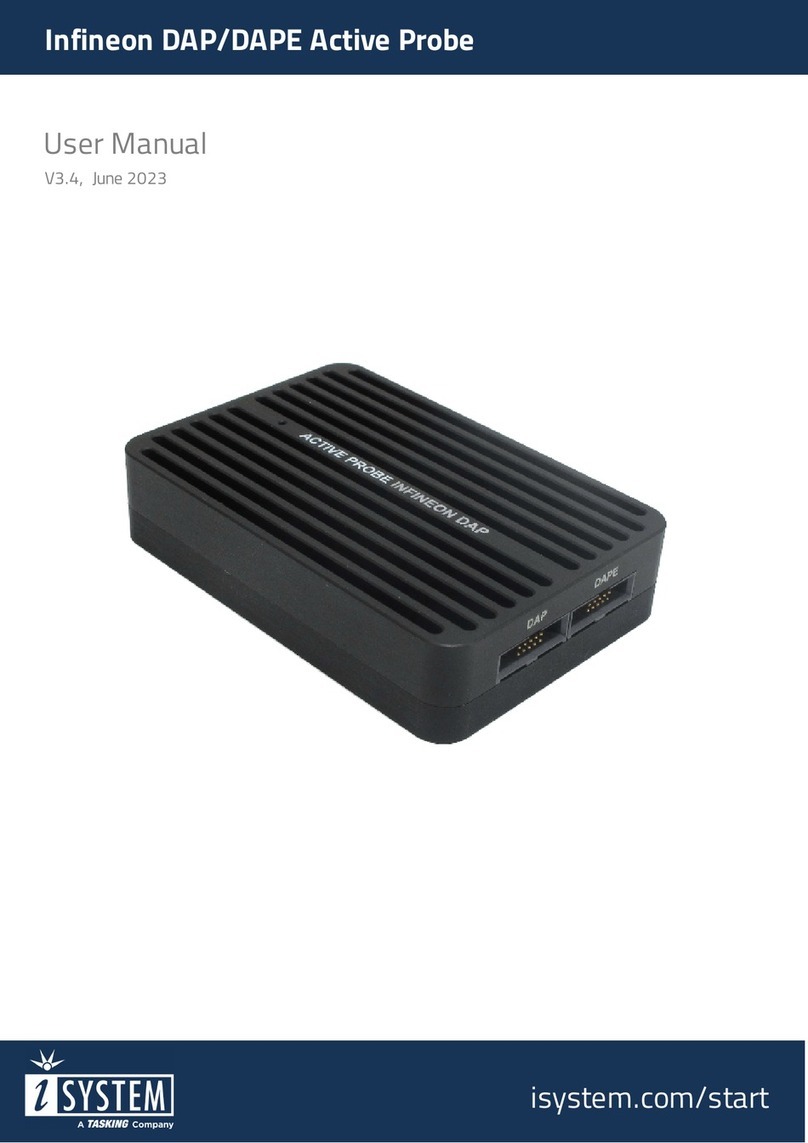
TASKING
TASKING iSYSTEM Infineon DAP User manual
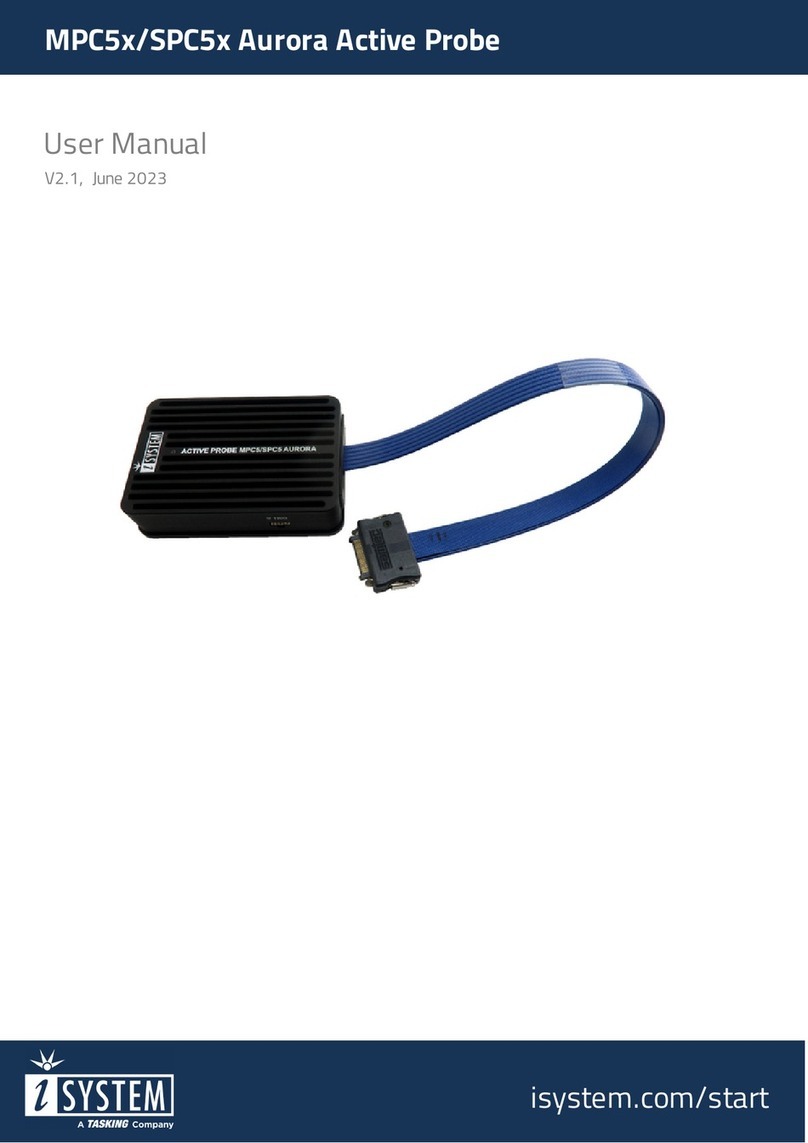
TASKING
TASKING iSYSTEM Aurora MPC5 Series User manual
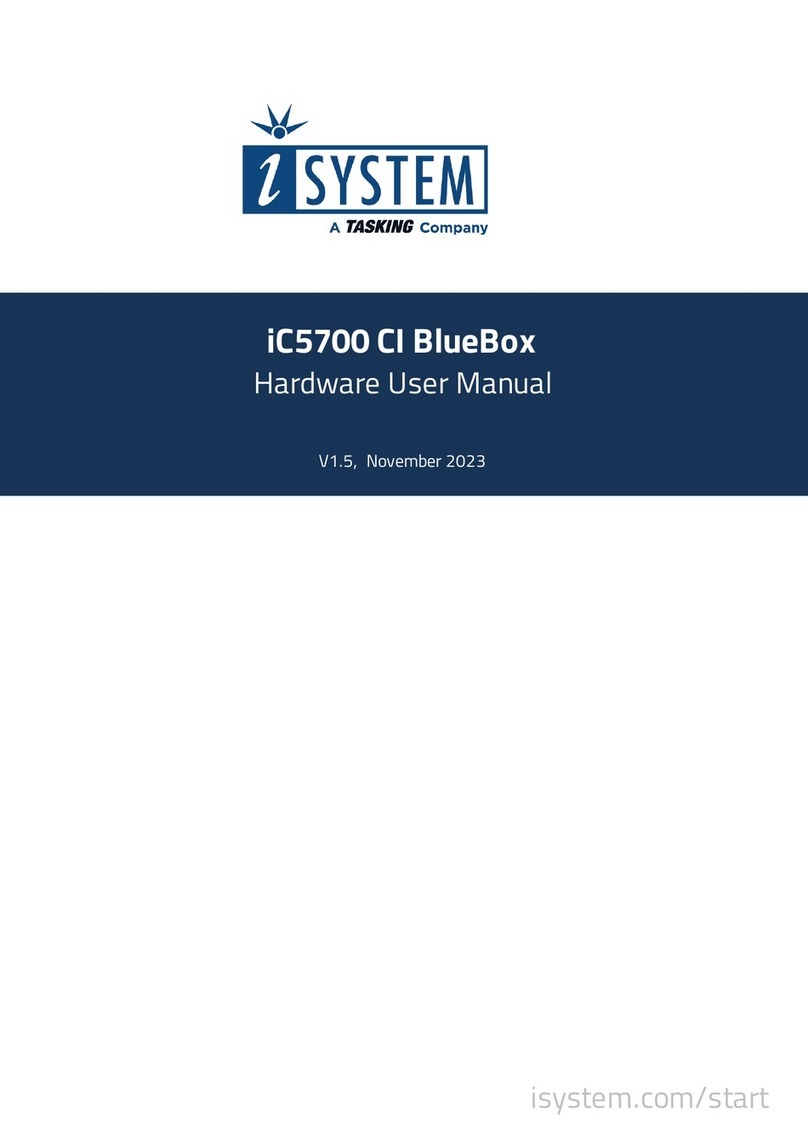
TASKING
TASKING iSYSTEM iC5700 CI BlueBox Instructions for use
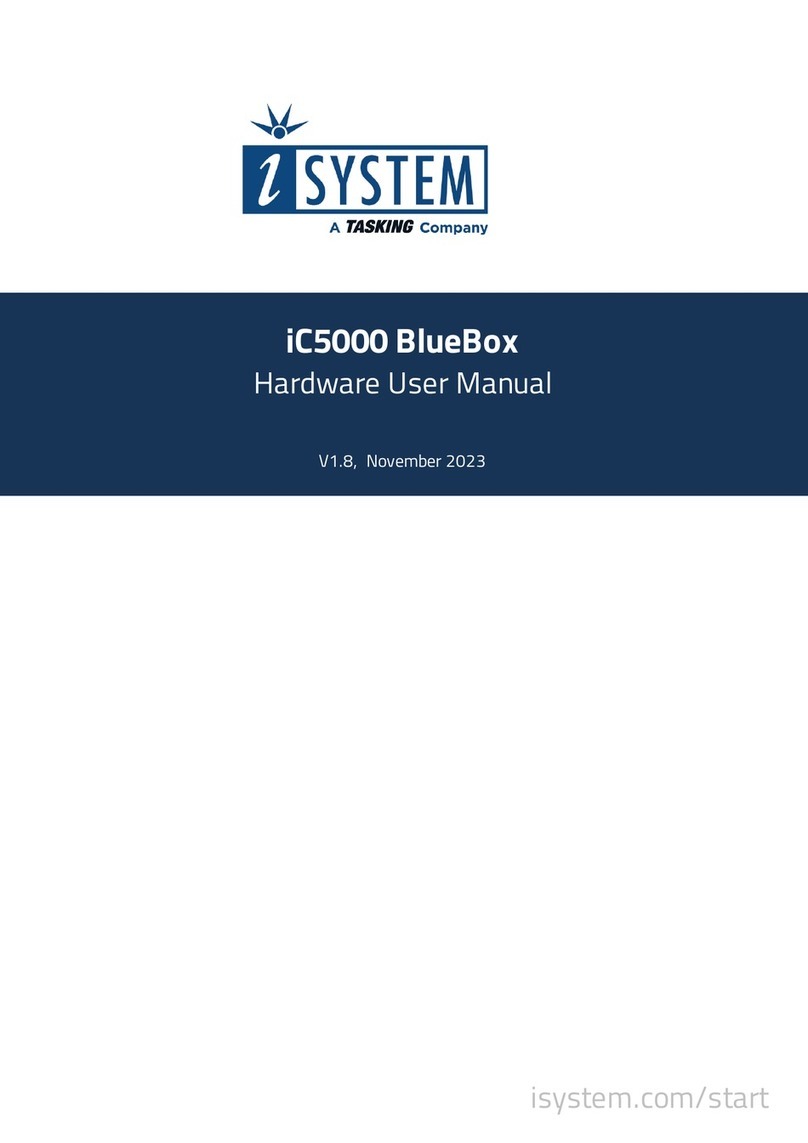
TASKING
TASKING iSYSTEM iC5000 Instructions for use
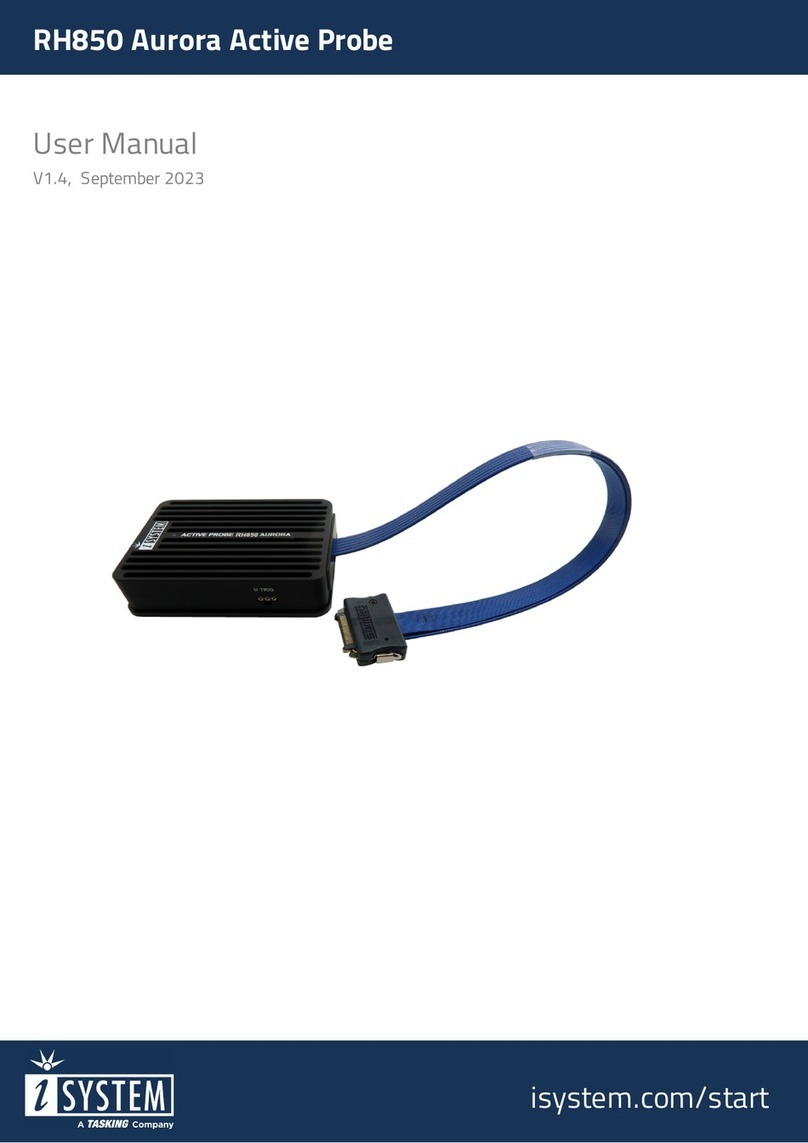
TASKING
TASKING iSYSTEM RH850 User manual
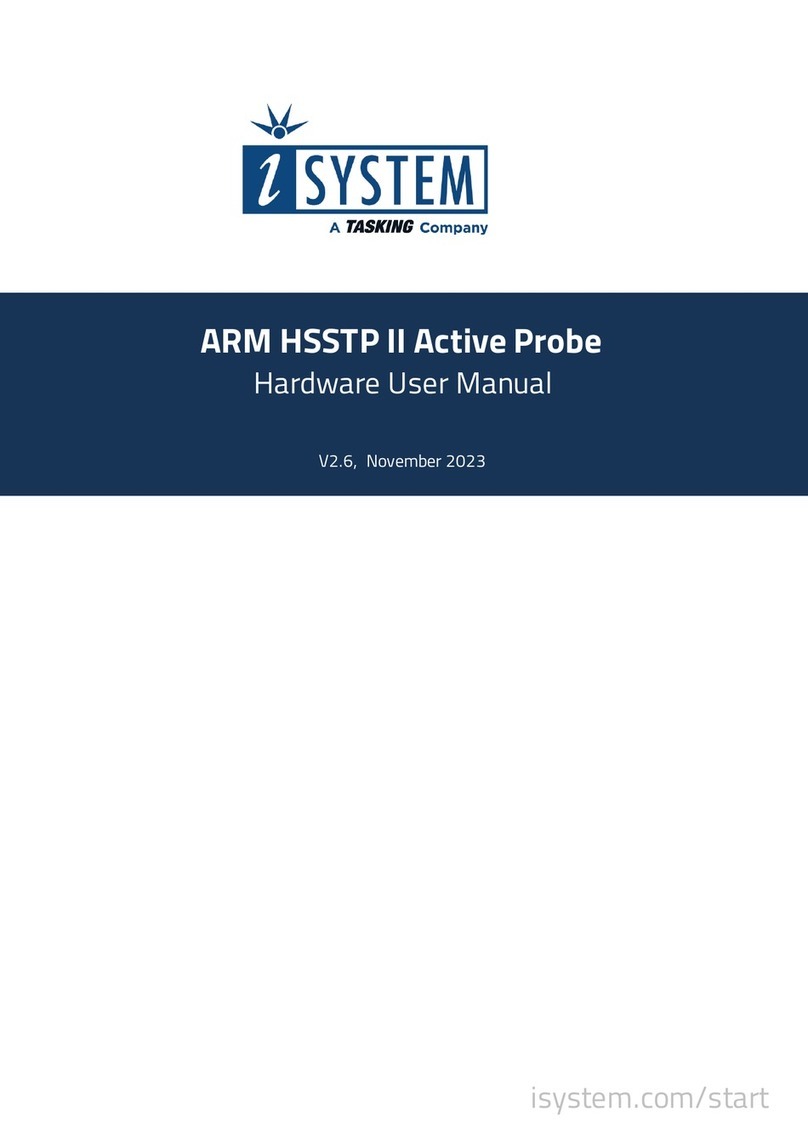
TASKING
TASKING iSYSTEM ARM HSSTP II Instructions for use

TASKING
TASKING iSYSTEM ARM HSSTP II User manual
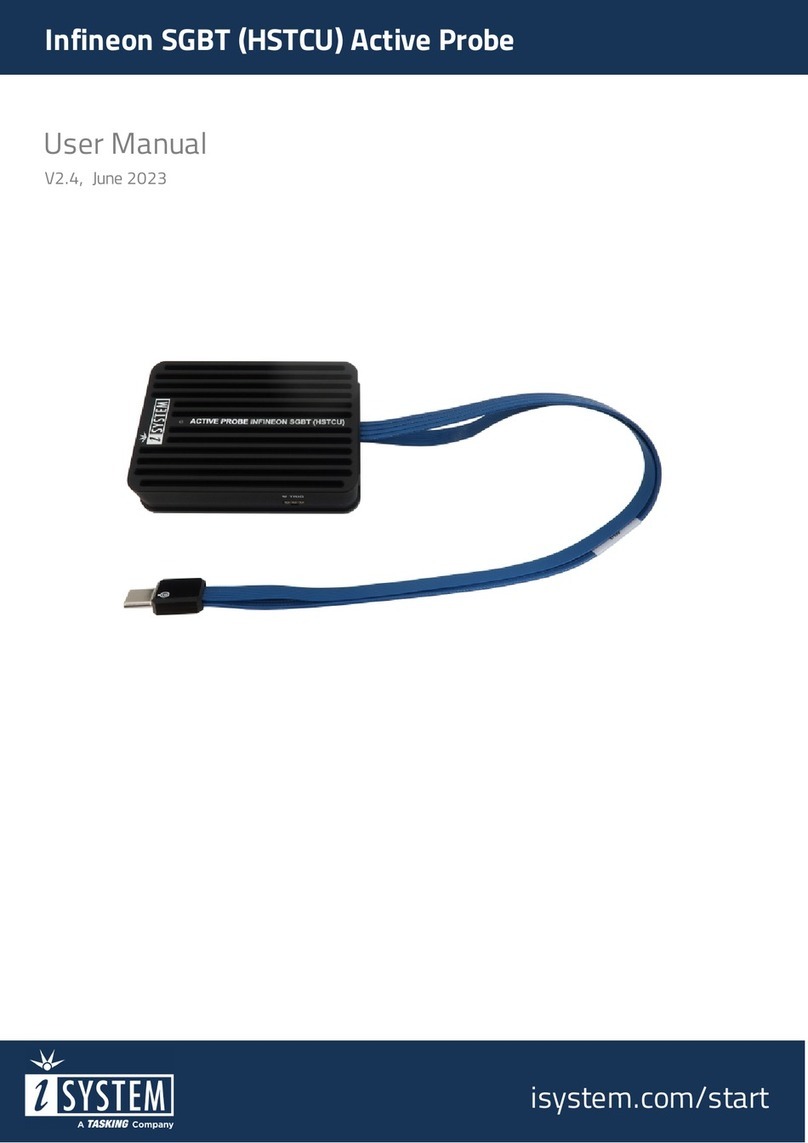
TASKING
TASKING iSYSTEM Infineon SGBT HSTCU User manual
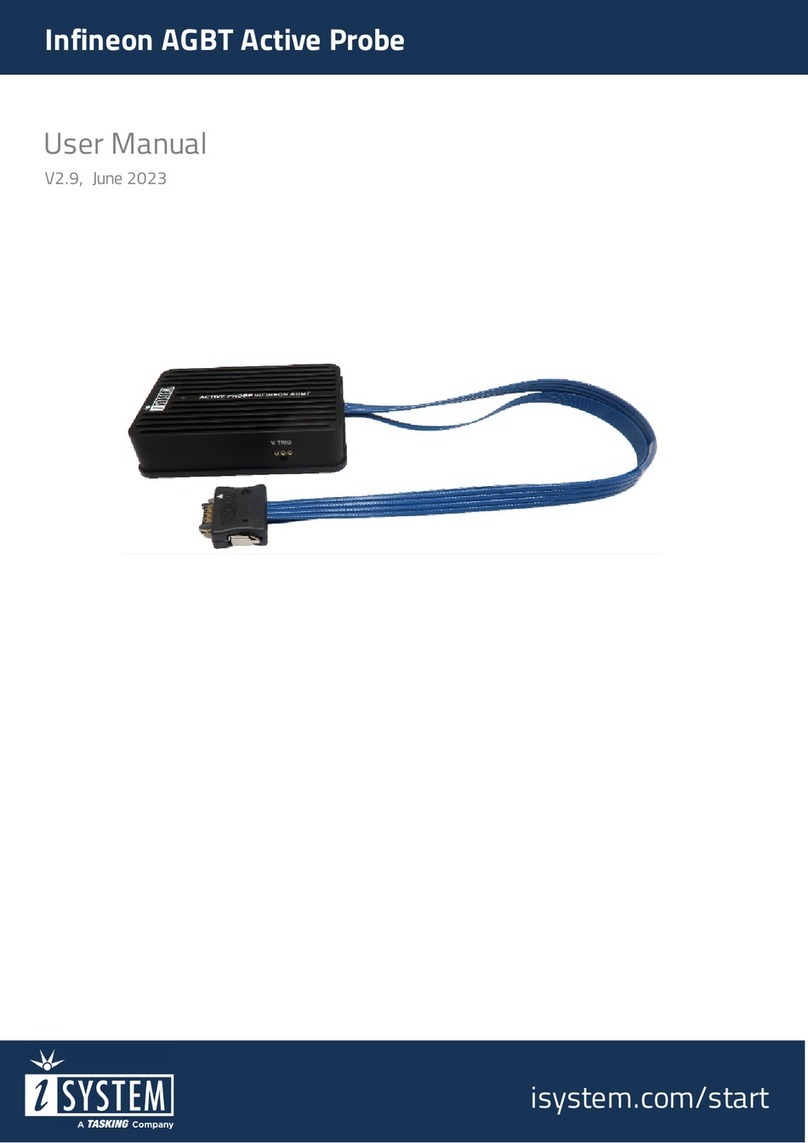
TASKING
TASKING iSYSTEM Infineon AGBT User manual
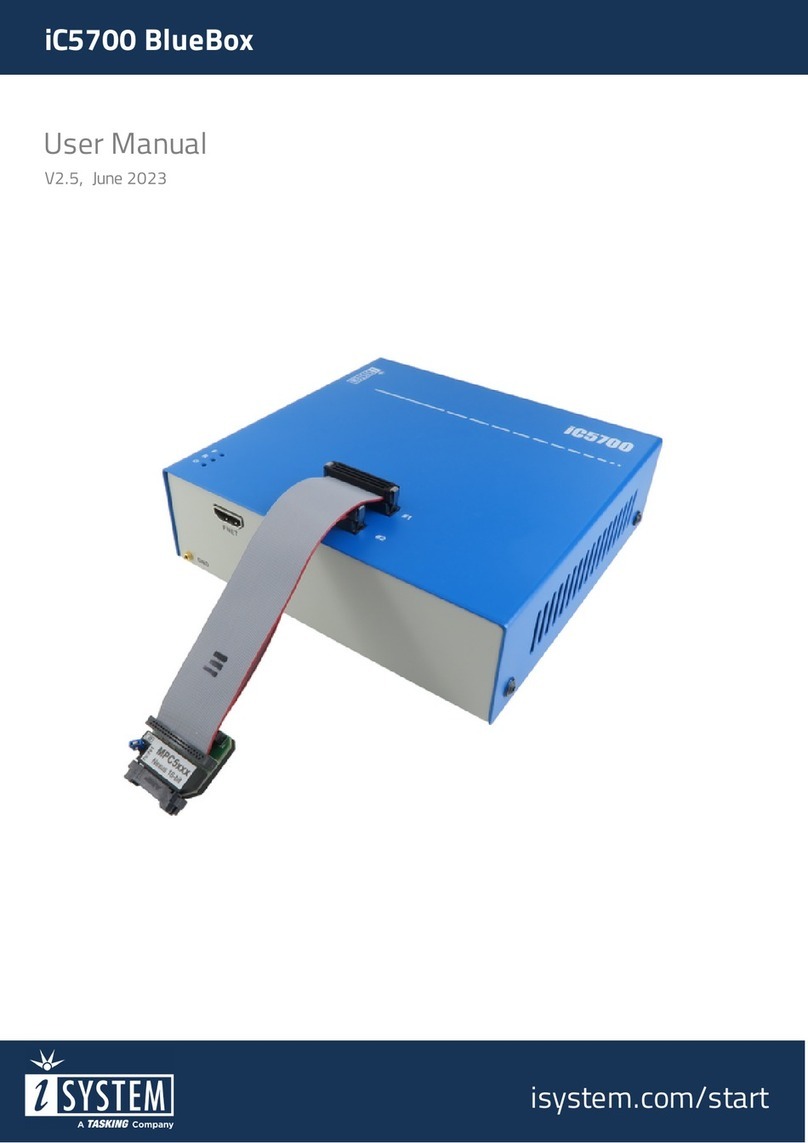
TASKING
TASKING iSYSTEM iC5700 User manual


